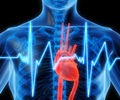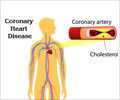Swedish researchers developed a home-use questionnaire that accurately identifies high heart attack risk, matching clinic tests.

Self-Report Tool for Identification of Individuals With Coronary Atherosclerosis: The Swedish CardioPulmonary BioImage Study
Go to source).
New Home-Use Questionnaire Accurately Identifies High Heart Attack Risk
Swedish researchers have developed a home-use questionnaire that rapidly detects a high risk of heart attack. A study has demonstrated that its accuracy matches that of blood tests and blood pressure measurements.‘A home-use test that detects 65% of high-risk heart attack individuals could save lives and prevent suffering. #medindia #hearthealth’





Published in the Journal of the American Heart Association, the study utilizes data from the SCAPIS population study, which is based at the University of Gothenburg and sponsored primarily by the Swedish Heart Lung Foundation.The home test consists of 14 questions that take five to eight minutes to answer. These questions relate to factors including age, gender, weight, waist circumference, smoking, high blood pressure, high blood fats, diabetes, and family history of cardiovascular disease.
According to the study, by combining information from the responses in a special algorithm, the home test can detect 65% of individuals at the highest risk of cardiovascular disease.
“The results show that our home test is as accurate as a clinic examination using blood tests and blood pressure measurements,” continues Professor Bergström. “If we can make the test widely available within healthcare, it can save lives and prevent suffering by helping us to identify those who are at high risk of heart attack or who are currently undertreated.”
Early Warnings can Save Lives
The study is based on data from 25,000 individuals aged 50–64 included in SCAPIS. All participants had their coronary arteries examined using computed tomography, which provides an image of the degree of atherosclerosis.Advertisement
Identifying people at risk before disease occurs is one of the main objectives of the Swedish Heart Lung Foundation’s focus on SCAPIS. As the foundation’s Secretary-General Kristina Sparreljung explains:
Reference:
- Self‐Report Tool for Identification of Individuals With Coronary Atherosclerosis: The Swedish CardioPulmonary BioImage Study - (https://www.ahajournals.org/doi/10.1161/JAHA.124.034603)
Source-Medindia















